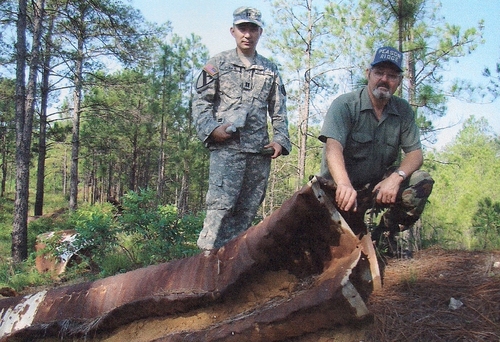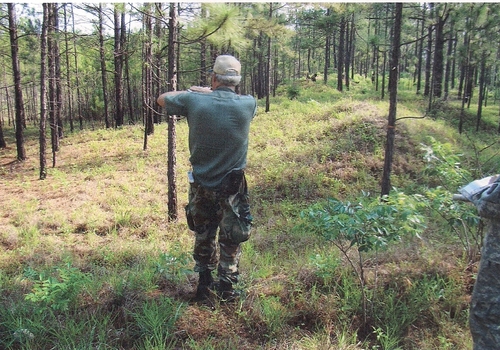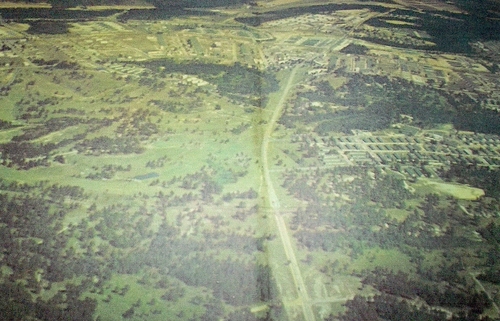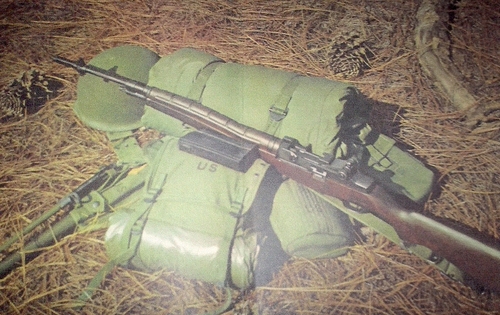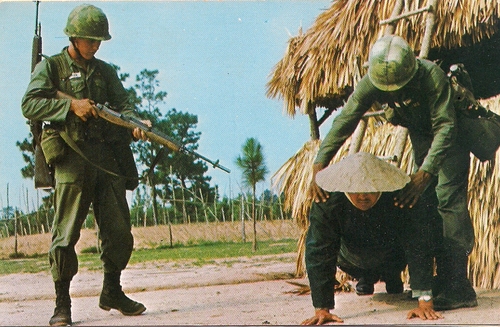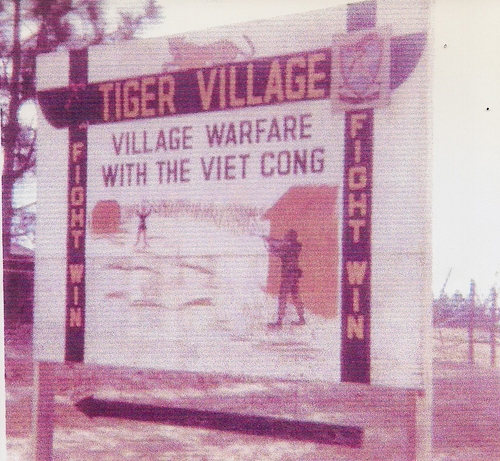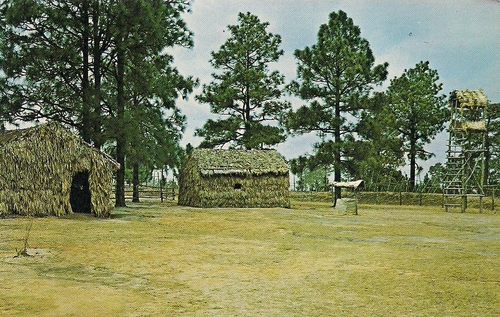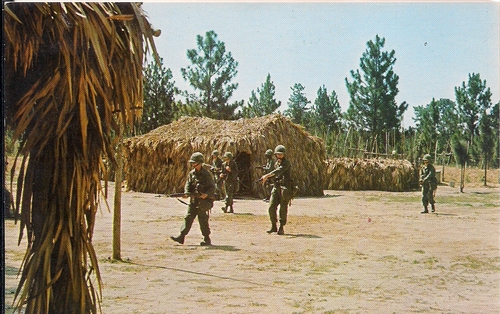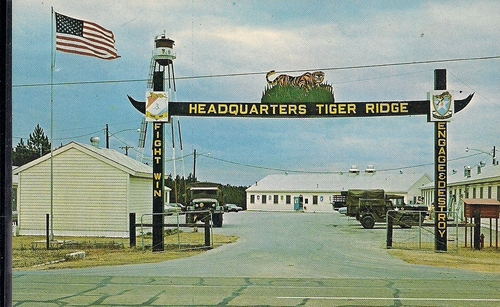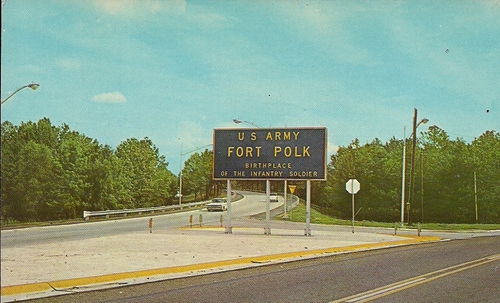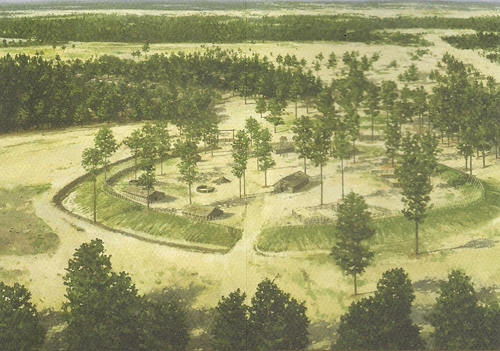.JPG)
By Rickey Robertson
Many of us can remember the 1960's and early 1970's and the first thing most folks think of is that this was the Vietnam War years. Yes, it was also the years of love in's, peace marches, riots, and of the hippie generation. But the one thing that impacted America more than anything was the war that we were involved in that was located in Southeast Asia in a country we had never heard of called Vietnam. Early in the presidency of John F. Kennedy, the first military advisors were sent to Vietnam to assist with training the fledgling Army of the Republic of Viet Nam, known to all as ARVN. The ARVN's were fighting to keep South Vietnam free of communist control from North Vietnam. It would be a long war, with America and its allies assisting with men, equipment, weapons, and material of all types. And the North Vietnamese were backed by all its communist friends, Russia, China, Hungary, and other Eastern Bloc nations. From 1963 until Saigon fell to the NVA in 1975 American fighting men and women would be right in the thick of the fight in this country 10,000 miles from home.
Beginning in 1963 nearby Fort Polk was issued a new mission. This mission was to begin training new infantry recruits and to give them intensive Advanced Infantry Training (AIT) in preparation for war, whether in Europe or in the jungles of Southeast Asia. As the draft intensified, literally thousands of recruits were bused into Fort Polk. As the buses arrived and turned onto Entrance Road, the first thing they saw was a big sign stating "Fort Polk Home of the Infantry Soldier". They were about to find the true meaning of what a ground pounder, mud crusher, boonie rat, and grunt meant. They were about to be trained at one of the best Army posts in the United States and would learn the true meaning of a combat infantry soldier. Their first 8 weeks would be Basic Training, where they learned to march, (walk and squawk by the numbers), do the manual of arms, learn different military procedures and customs, master all types of weapons and learn how to qualify with them on the firing ranges, and most of all, conduct physical training (PT). Do you still remember the push up position? After graduating from Basic Training and passing in review, these soldiers then moved to North Fort Polk to begin 8 weeks of Advanced Infantry Training.
During the 8 weeks of AIT, Fort Polk had 2 training areas for these up and coming infantrymen. Best known was Tiger Land, located on Fort Polk's main post. But the one we are visiting today was known as "Tiger Ridge". Tiger Ridge was located on Peason Ridge Military Reservation located in Vernon, Sabine , and Natchitoches Parishes. At Tiger Ridge there was a Headquarters Cantonment Area that had barracks for these trainees, along with a mess hall where hot meals were served. At the main entrance was a big overhead sign stating "Tiger Ridge" with other signs that read "Fight-Win" and "Bong the Cong" But the use of these barracks and mess hall was very minimal. These soldiers would be in the field training in patrol tactics, search and destroy missions, and attacking and even protecting the Vietnamese Village known as Tiger Ridge.
The Tiger Ridge Village was made up of a village made up of many thatched huts, buildings, lookout tower, and animal pens. The villagers were NCO's (Non Commissioned Officers) who had served in Vietnam and other combat situations during their careers. They could either be friendly or they could be VC. The soldiers had to find out which side they supported. This was a large village, and for protection, it had a large berm all the way around it. Built into this berm were bunkers for M-60 machine guns, fighting positions for individual soldiers, and planted thickly all around the berm were "punji sticks" made of sharpened bamboo, and strings of concertina wire to prevent the village from being attacked and overrun by the VC. And underground throughout the whole village were tunnels where the villagers could hide during an attack or where the enemy could hide and penetrate the village defenses. This was a very challenging place for the young infantrymen.
The trainees were trucked from the HQ at the Cantonment Area to an assembly area near the Tiger Ridge Village. Here they were issued blank ammo, water, and C-rations for the field. Orders were given, and patrols set out to conduct reconnaissance on the village. All along the trails leading to the village were booby traps, punji pits, and spider holes where the VC could pop up and fire on the patrols. After negotiating the trail, they entered the village and began search operations of it. Any of the villagers could be questioned, any of the villagers could be searched, any and all of the hooches could be searched for enemy equipment and personnel. After searching the village, the patrol would either stay the night itself or radio the rest of the company to move into defensive positions at the village. The soldiers would man the bunkers and perimeter foxholes throughout the night, no matter what type of weather, just as they would do in the future in Vietnam. And during the night there would be some type of VC probe on the defensive lines around the village. The instructors would be in continuous contact with the trainees throughout these experiences. They would patiently explain something that the trainees missed during their searches, explain how to find and defuse booby traps, how to find the best fields of fire when digging in for the night, how to question the villagers and get the most information from them, and how to clean and keep up their weapons and equipment. This was as close to the real deal as it would be for these trainees. The tactics and training they received at Tiger Ridge would help them survive when they arrived in beautiful exotic Vietnam.
Each Friday at Fort Polk over 2000 trainees would graduate from Advanced Infantry Training. It was said that of every 100 man company, 98 from that company received orders for Vietnam in some capacity. There was an old saying that "Fort Polk Trains the Best" during the Vietnam War years, but I can say that this tradition continues to this day with the intensive training provided by the Joint Readiness Training Center located there. To insure our freedom, our military must train and do it realistically like the Vietnam years.
Many thousands upon thousands of trainees went through Tiger Ridge. Several months ago I was contacted by Fort Polk personnel and was asked to lead a group to find and locate the site of Tiger Ridge. I carried them right to it. And even though there are no hooches or buildings, there are lots of things to distinguish the area and bring back memories of it. A large part of the original berm is still located there. I was able to show the group old fighting holes with M-60, M-14, and M-16 brass still in the bottom of them, parts of the old concertina wire that surrounded the camp was still there, the old ambush trail was still there with even a couple of spider holes to be found, old C-ration cans laying around, and yes, I even got to show them some of the old tunnel network that is still located there in a few places. It was a place filled with military history…..a time in our history that was turbulent as the nation wanted out of the war. But it was a place where heroic American soldiers trained in combat tactics that they used as they lived and fought in primitive jungle conditions in Vietnam. I remember the sacrifice made by these brave men. They fought with bravery and honor and overcame so many obstacles. If you also remember these GI's and their sacrifice, give a Vietnam Vet a pat on the back and tell him "Thanks buddy for your service. Sorry you never got it when you came home all those years ago, but we remember and say thanks now "! With pride I salute the thousands of trainees who went through Tiger Ridge !
